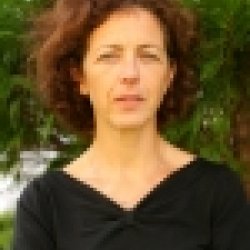
Prof. Helen Byrne
Professor of Applied Mathematics
Tutorial Fellow, Keble College
Previous Roles:
Examiner for Final Honour School Mathematics (Panel B)
Associate Head of Department, Planning and Equality and Diversity
Senior Mathematics Tutor, Keble College
Director of Equality and Diversity, MPLS Division
University of Oxford
Andrew Wiles Building
Radcliffe Observatory Quarter
Woodstock Road
Oxford
OX2 6GG
- MO Bernabeu, J Kory, JA Grogan, B Markelc, A Beardo, M d’Avezac, R Enjalbert, J Kaeppler, N Daly, J Hetherington, T Krueger, PK Maini, JM Pitt-Francis, RJ Muschel, T Alarcon and HM Byrne (2020). Abnormal morphology biases haematocrit distribution in tumour vasculature and contributes to heterogeneity in tissue oxygenation. PNAS 117 (45) 27811-27819.
- A Osojnik, EA Gaffney, M Davies, JWT Yates, HM Byrne (2020). Identifying and characterising the impact of excitability in a mathematical model of tumour-immune interactions. J Theor Biol 501: 110250
- TD Lewin, PK Maini, EG Moros, H Enderling and HM Byrne (2019). A three-phase model to investigate the effects of dead material on the growth of avascular tumours. Mathematical Modelling of Natural Phenomena 15: 22.
- HZ Ford, HM Byrne and MR Myerscough (2019). A lipid-structured model for macrophage populations in atherosclerotic plaques. J Theor Biol 479: 48-63.
- MJ Chen, LS Kimpton, JP Whiteley, M Castilho, J Malda, CP Please, SL Waters and HM Byrne (2018). Multiscale modelling and homogenisation of fibre-reinforced hydrogels for tissue engineering. European Journal of Applied Mathematics, 1-29. (doi:10.1017/S0956792518000657).
- JA Grogan, AJ Connor, JM Pitt-Frances, PK Maini and HM Byrne (2018). The importance of geometry in the corneal micropocket angiogenesis assay. PLoS Comp Biol 14(3): e1006049.
- S Pillay, HM Byrne and PK Maini (2018). The impact of volume exclusion processes on angiogenesis models. J Math Biol. 77(6-7): 1721-1759.
- B Lambert, AL MacLean, AG Fletcher, AN Combes, MH Little, HM Byrne (2018). Bayesian inference of agent-based models: a tool for studying kidney branching morphogenesis. J Math Biol 76(7): 1673-1697.
- SK Kay, HA Harrington, S Shepherd, K Brennan, T Dale, JM Osborne, DJ Gavaghan, HM Byrne (2017). The role of the Hes1 crosstalk hub in Notch-Wnt interactions of the intestinal crypt. PLoS Comp Biol. 13(2): e1005400.
- AL MacLean, Z Rosen, HM Byrne, HA Harrington (2015). Parameter-free methods distinguish Wnt pathway models and guide design of experiments. PNAS, 10.1073/pnas.1416655112
2019: Leah Edelstein-Keshet Prize (Senior Award), Society for Mathematical Biology
2020: Fellow of the Society for Mathematical Biology
- M5: Multivariable calculus
- B5.2: Applied Partial Differential Equations
- B5.5: Further Mathematical Biology
My research focuses on the development and analysis of mathematical and computational models that describe biomedical systems, with particular application to the growth and treatment of solid tumours, wound healing and tissue engineering. My aims in studying such models are two-fold: to identify the mechanisms responsible for observed biomedical phenomena and to abstract from the resulting mathematical models novel features that merit theoretical investigation.


